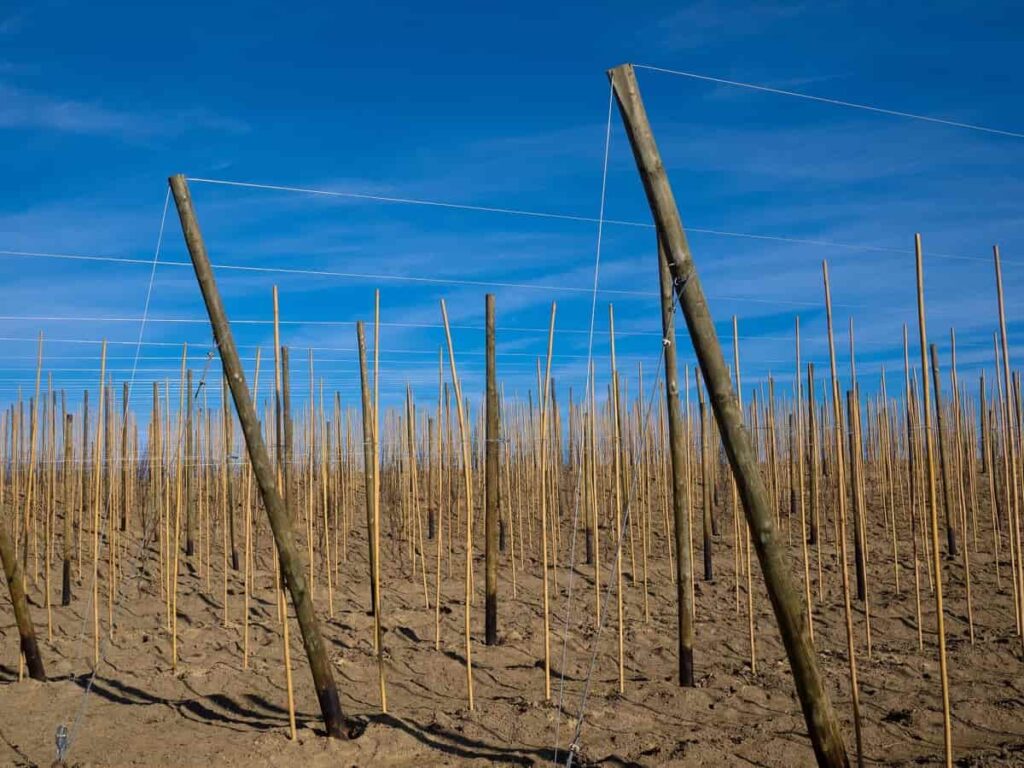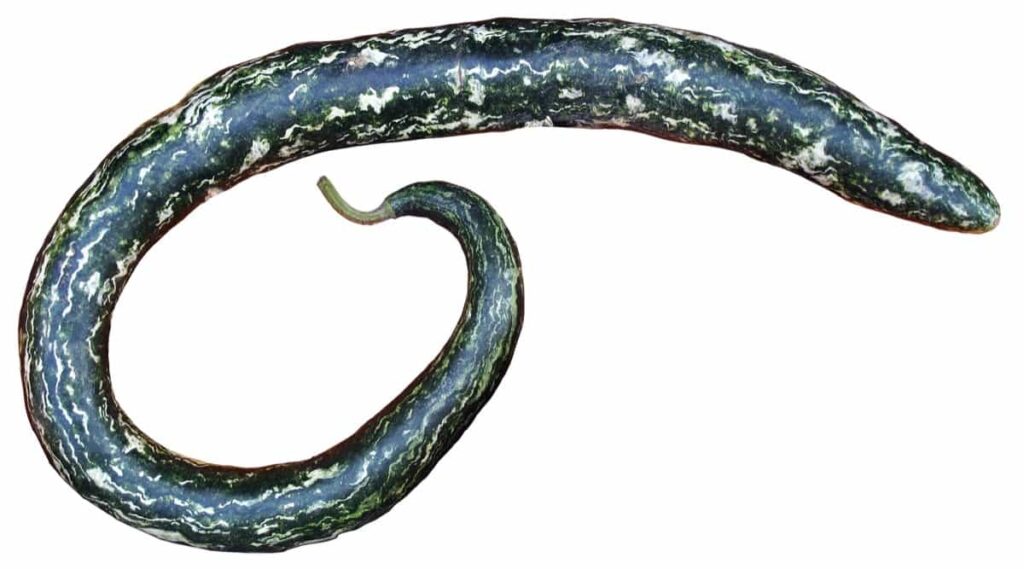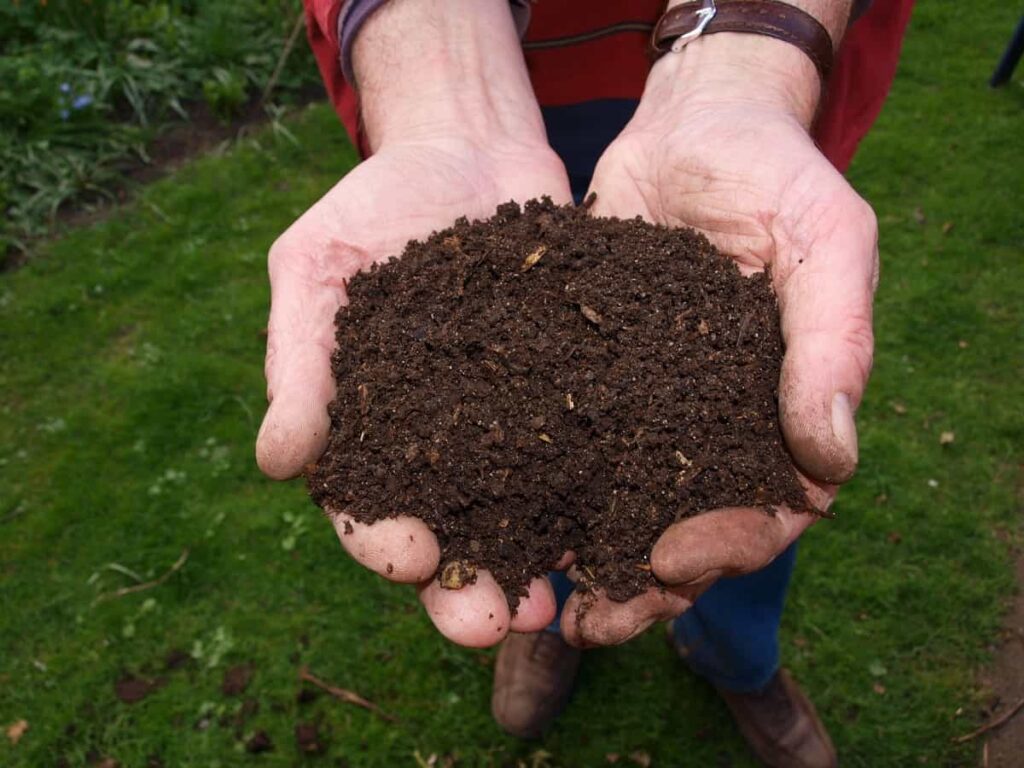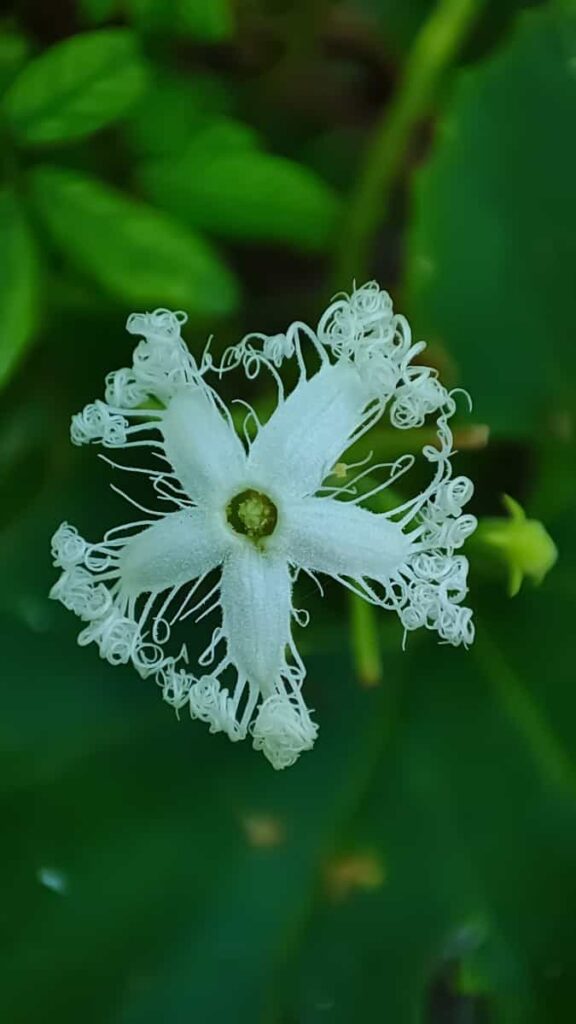A successful farmer who grows ivy gourds in the East Godavari region of Andhra Pradesh is covered in the following article, which offers the reader a peek into the day-to-day work of the farmer. This article will discuss the specifics of Mr. Srinivas’s Snake gourd farm’s cultivation and provide details and advice on the cultivation of the Ivy gourd crop. Let’s check out how this farmer earning 5.5 lakh rupees from his snake gourd farm below.
How do you grow a snake gourd?
Like other vines, Snake gourd thrives in July’s warm soil and cool evenings. Increasing the soil temperature by using a raised bed or mounding the soil above ground level is possible. Planting Snake gourd continuously after the temperature has been over 50 degrees F for many nights is risky. You can encourage the long, straight growth of your snake gourds by training them on a trellis. In addition to preventing the gourd from being damaged by pests and disease, this cultivation method keeps the plants off the ground.

Female flowers can be identified from males by developing fruit in their centers. You can manually pollinate the plant by rubbing the stamen of a male flower on the stigma of a female bloom. This strategy can significantly increase your yield. Snake gourds, when left alone, can reach a height of six feet or more. When snake gourds reach that size, they become fibrous and undigestible. The ideal time to choose a snake gourd for eating is approximately a foot and a half (up to.5 meters) in length or around the size of your forearm.
Does the snake gourd need sunlight?
Snake gourds need to be planted where they will receive full sunlight and have plenty of room to sprawl. Although it is possible to cultivate them in pots or containers, doing so will significantly restrict their size and overall production.
How many days does a snake gourd take to grow?
After planting, it takes between 45 and 60 days for the Snake Gourd to mature enough to be harvested, depending on the variety.
Is snake gourd creeper or climber?
It belongs to the gourd family and grows as a climber. It is a climbing plant that can be eaten, and the fruits of the plant are cultivated professionally so they can be used as vegetables. Because it has fluffy, white blooms followed by fruits resembling snakes and is either long and sausage-shaped or occasionally twisted like snakes, it is often known as the Snake Gourd. Because it is a monoecious plant, it produces separate male and female blooms on the same plant.
In case you missed it: How to Grow Ginger in the USA: Soil, Propagation, Planting, Care, and Farming Tips
How to harvest snake gourds?
Wait until the snake gourds’ stems and tendrils have turned brown before cutting them. To know when they are ripe, wait for the gourd to grow lighter. If the pulp is drying, the water evaporates and is ready to be used. Take care not to harvest your gourds too early, or they can wilt and spoil.
A gourd can never be left on the vine for too long, yet it can be harvested too early. Snake Gourds’ mold grows on their skin when they dry. If you don’t want to harvest your gourds immediately, you can either store them in a cool, dry spot or let them dry out on the vine.
Does snake gourd need pollination?
For Snake Gourd to set fruit, it needs the assistance of bees or other insects in pollinating. Pollination by hand is possible during the times of day when flowers are open and producing nectar. Even before daylight, the male flowers had completely opened their petals. When the weather is like this, manual pollination is most effective.
How long does it take for snake gourd to germinate?
It takes between 10 and 30 days for a snake gourd seed to sprout. Maintaining a wet soil environment is essential throughout the germination process. The germination rate of Snake Gourd seeds can be increased by soaking them in water for an hour. In certain cases, soaking the seeds is not necessary. Planting the Snake gourd seeds on a tray is the best option.
If our roots are still in the tray, we can move to a safer location if it starts to rain heavily. The plant can be transplanted into the container when it reaches a length of two to three inches. Growing conditions for Snake gourd are ideal throughout the summer months. The seeds of a snake gourd can be planted at any time of year, but the vegetable thrives in the warm months of spring and summer.
Being a crop most suited to warm climates, it can withstand long periods of direct sunshine and even benefit from it. Temperatures between 17 and 23 degrees are ideal for growing snake gourd. Due to the elevated temperature, development is accelerated.
In case you missed it: Greenhouse Farming in the USA: How to Start, Cost, Crops, and States

How much water do snake gourd plants need?
The water needs of snake gourds are low—every other day throughout the summer and winter and every day during the wetter months. The intense sunshine won’t damage a snake gourd. Sunlight is essential for its rapid development. Less sun can sometimes cause plant death. Ensure it gets at least three to four hours of sunlight daily.’
How this farmer earning 5.5 lakh rupees from his snake gourd farm
The success story of Mr. Srinivas
Mr. Srinivas is a small-scale farmer in East Godavari district, Andhra Pradesh. He owns one 1-acre of land, which he used to cultivate different crops. He used to cultivate long-term crops such as paddy and cotton. But due to some market issues, he stopped the cultivation and wanted to enter the vegetable cultivation business. Even in vegetable cultivation, he wanted to do something different.
He wanted his crop to be high in quality and demand in the market. While investigating what crops to grow, he learned that snake gourds have constant market demand and fewer price fluctuations. Also, he didn’t want to sell his produce to the market. Instead, he wanted to sell his vegetables directly to the customers in the market. This led him to cultivate snake gourds, and that too in the pergola cultivation method.
Pergola cultivation is a unique method for cultivating vine crops. This is different from traditional vining crops cultivation. Once he started cultivation of snake gourds under the pergola farming method, he saw huge profits. He didn’t imagine he’d become so successful. Now let’s see the details of Mr. Srinivas’s snake gourd farm, his experiences, and the cultivation tactics that led him to huge profits.
Pergola construction details, according to Mr. Srinivas.
A pergola serves as excellent support for any climbing plant. Some of the numerous advantages of this kind of farming include improved harvest quality, fewer pesticide applications, and optimal growing conditions for fruit production. Since most snake gourds are deformed due to the traditional cultivation method of sowing seeds directly in the ground, it is best to avoid this. More often than not, the hot sun dries off the fruit of the snake gourd.
In case you missed it: How this Farmer Earning 7 Lakh Rupees from his Ivy Gourd Farm: A Success Story for Beginners

Snake gourds thrive best when left to hang below a pergola. A pergola is a frame of poles and wire that supports climbing plants like vines. The mature plant climbs the pergola and covers it in lush green foliage. To keep the plant’s water supply from evaporating, the leaves of a pergola shade structure soak up sunlight at the pergola’s top and block it from reaching below.
Mr. Srinivas used bamboo poles to construct a pergola on his 1-acre property. They’re 8-foot-tall poles, one after another. He then spread a pergola out of plastic wires by stringing them between the poles. There are 12 feet between rows of poles and 11 feet between individual poles within a row. As far as Mr. Srinivas is concerned, a pergola can serve its purpose for up to twenty years after it has been constructed.
Despite the substantial advantages over time, the expense of constructing a pergola is negligible and one-time only. As a bonus, the government provides up to 50% subsidies for pergola construction. You must submit your application for the subsidy at the agricultural office in your respective district or Mandal. Since Bamboo poles were durable and inexpensive, he opted to utilize them.
Snake gourd cultivation details, according to Mr. Srinivas
While land preparation after plowing, Mr. Srinivas added nearly four trucks of animal manure. He also added a truck of compost. His whole one-acre farm took nearly 8 to 10 tons of manure. After adding these, he plowed again and made rows and mounds in his farm, each of 1 feet height. Seeds are sown at a depth of 3 cm depth. Along these rows are poles, and 2 to 3 seeds are sown near each pole.
These seeds will grow and creep to the top with the pole’s support when they emerge. For one acre, it takes early 700 to 800 grams of seeds, says Mr. Srinivas. Once the foliage reaches the top, the vining grows faster as the sunlight helps. And you can grow and see the snake gourds hanging down the pergola in no time. Mr. Srinivas says that for Snake gourd cultivation, clay soils are ideal with a pH of 6 to 7.
These grow well in humid weather. A temperature of 25 to 30 degrees Celcius is preferable. On his farm, Mr. Srinivas never used chemical fertilizers. He always preferred natural fertilizers. This is because he was selling directly to the customers. He always uses panchgavya as a natural fertilizer to fertilize his crops. He wanted to sell quality vegetables. Even for the pesticides, he prepares natural water decoction liquid and sprays it on his farm.
In case you missed it: How to Grow Kale in the USA: Soil, Propagation, Planting, Care, and Farming Tips

This ensures his vegetables are of high quality and yield and will also have massive customer demand. Also, while plants are flowering stage, spraying sour curd on your farm can prevent many diseases, says Mr. Srinivas. Watering is done once every 3 to 4 days. Mr. Srinivas uses a drip irrigation process to water his crops. He says this irrigation way is very useful and also time and water-saving. Also, many times, fertigation is done through drip pipes.
Fertigation is a process of providing fertilizers to plants using drip irrigation pipes. You should fertilize plants after the water; this is because only the nutrients deposit near the roots of the plants, and it will be easy for the plants to absorb the nutrients without any wastage, he added.
Mulching covers are also essential, says Mr. Srinivas. Mulching covers should be spread on the rows. These prevent extra vegetation from growing near the plants, helping the plants reduce competition for nutrients. Also, if the pergola is constructed in a triangle shape, you can expect more harvest from the plants, says Mr. Srinivas. You can expect the first harvest 40 days after the seed sowing. After that, you can harvest nearly 12 to 15 tons per acre, says Mr. Srinivas.
Profit analysis of Mr. Srinivas’s farm
Mr. Srinivas doesn’t sell his produce to the market. Instead, he sells directly to the customers. His farm has a huge reputation for quality snake gourds, so his vegetables always have high demand. As a result, he sells his produce for nearly 12 rupees per kg. Mr. Srinivas says he invested nearly 1.2 lakhs in his 1-acre farm. When asked about their income, he says he would get nearly four lakhs from his farm.
In case you missed it: How to Fix Calcium Deficiency in Soil and Plants: Symptoms, Causes, Adding Naturally, and Chemically

When we erase this investment from the income, we will get nearly 2,80,000 rupees per batch. You can cultivate two crops in a year, so you can say that his profit would be nearly 5,60,000 rupees yearly. Mr. Srinivas is now happy and satisfied with what he is doing and wants more farmers to get into cultivating this vegetable.
He says that instead of selling to the market, you can expect more profit if you find a way to sell directly to the customers. He advises farmers to get into this business as it involves less risk and more profit. His snake gourd farm is now reputable, and his vegetables have more demand in his village and neighboring ones.
- Types of Pesticides Used in Agriculture: A Beginner’s Guide
- Economical Aquaculture: A Guide to Low-Budget Fish Farming
- 15 Common Planting Errors That Can Doom Your Fruit Trees
- How to Make Houseplants Bushy: Effective Tips and Ideas
- Innovative Strategies for Boosting Coconut Pollination and Yield
- Pollination Strategies for Maximum Pumpkin Yield
- The Complete Guide to Chicken Fattening: Strategies for Maximum Growth
- Natural Solutions for Tulip Problems: 100% Effective Remedies for Leaf and Bulb-Related Issues
- Revolutionizing Citrus Preservation: Towards a Healthier, Greener Future
- Natural Solutions for Peony Leaf and Flower Problems: 100% Effective Remedies
- Maximizing Profits with Avocado Contract Farming in India: A Comprehensive Guide
- Natural Solutions for Hydrangea Problems: 100% Effective Remedies for Leaf and Flowers
- The Ultimate Guide to Choosing the Perfect Foliage Friend: Bringing Life Indoors
- From Sunlight to Sustainability: 15 Ways to Use Solar Technology in Agriculture
- The Ultimate Guide to Dong Tao Chicken: Exploring from History to Raising
- The Eco-Friendly Makeover: How to Convert Your Unused Swimming Pool into a Fish Pond
- Mastering the Art of Delaware Chicken Farming: Essentials for Healthy Backyard Flocks
- 20 Best Homemade Fertilizers for Money Plant: DIY Recipes and Application Methods
- How to Craft a Comprehensive Free-Range Chicken Farming Business Plan
- Brighten Your Flock: Raising Easter Egger Chickens for Beauty and Bounty
- How to Optimize Your Poultry Egg Farm Business Plan with These Strategies
- Subsidy for Spirulina Cultivation: How Indian Government Schemes Encouraging Spirulina Farmers
- Ultimate Guide to Raising Dominique Chickens: Breeding, Feeding, Egg-Production, and Care
- Mastering the Art of Raising Jersey Giant Chickens: Care, Feeding, and More
- Ultimate Guide to Raising Legbar Chickens: Breeding, Farming Practices, Diet, Egg-Production
- How to Raise Welsummer Chickens: A Comprehensive Guide for Beginners
- How to Protect Indoor Plants in Winter: A Comprehensive Guide
- Ultimate Guide to Grow Bag Gardening: Tips, Tricks, and Planting Ideas for Urban Gardeners
- Guide to Lotus Cultivation: How to Propagate, Plant, Grow, Care, Cost, and Profit
- Agriculture Drone Subsidy Scheme: Government Kisan Subsidy, License, and How to Apply Online
- Ultimate Guide to Raising Araucana Chickens: Breed Profile, Farming Economics, Diet, and Care
- Bringing Hydroponics to Classroom: Importance, Benefits of Learning for School Students
- Ultimate Guide to Raising Polish Chickens: Breed Profile, Farming Economics, Diet, and Care
- Ultimate Guide to Raising Australorp Chickens: Profile, Farming Economics, Egg Production, Diet, and Care
- Silkie Chicken Farming: Raising Practices, Varieties, Egg Production, Diet, and Care
- Sussex Chicken Farming: Raising Practices, Varieties, Egg Production, Diet and Care
